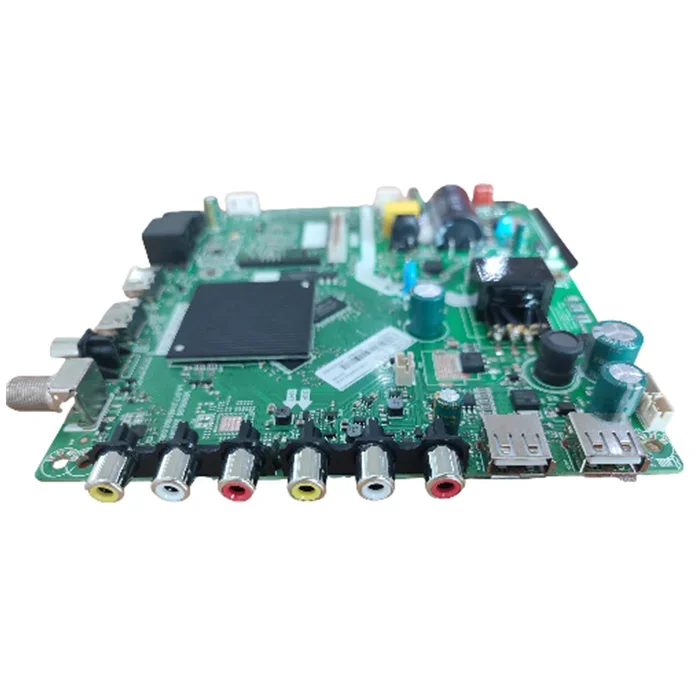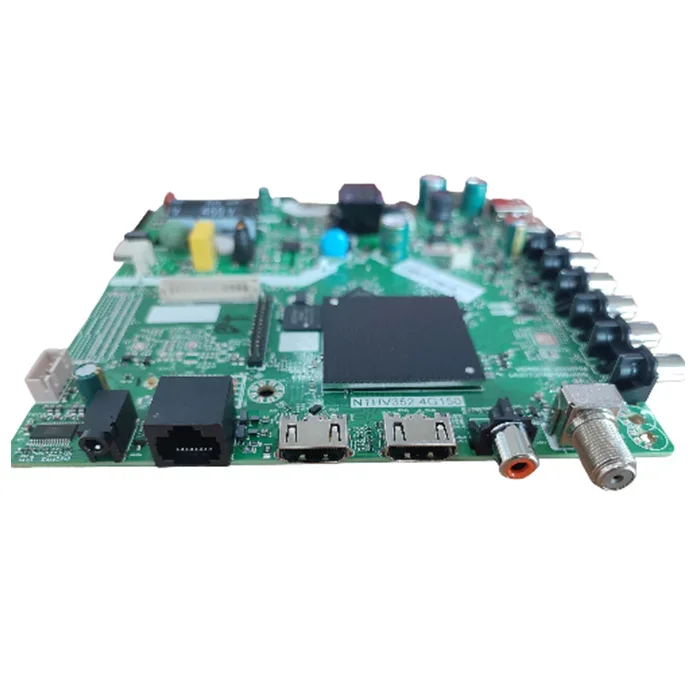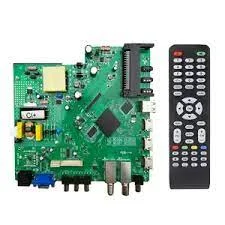TV motherboards are the backbone of your television, responsible for its overall performance. However, like any electronic component, they can encounter issues that affect the viewing experience. In this article, we will explore some common TV motherboard problems and provide practical solutions to troubleshoot them effectively.
I. No Power or Startup Issues
One of the most common problems with TV motherboards is the failure to power on or start up properly. This can be caused by various factors, including faulty power supply, loose connections, or a defective motherboard. Here are some steps to diagnose and resolve this issue:
1.Check the power supply: Ensure that the power cord is securely plugged into the wall outlet and the TV. Try using a different power outlet or cord to rule out any power supply problems.
2.Inspect connections: Verify that all cables, including HDMI, AV, and power cables, are properly connected to the TV and external devices. Loose connections can prevent the TV from powering on.
3.Reset the TV: Perform a power cycle by unplugging the TV from the power source, waiting for a few minutes, and then plugging it back in. This can help reset the motherboard and resolve startup issues.

II. No Display or Picture Issues
Another common problem faced by TV owners is a lack of display or picture issues. If you're experiencing a blank screen, distorted images, or poor picture quality, consider the following troubleshooting steps:
1.Check the input source: Ensure that the TV is set to the correct input source (e.g., HDMI, AV) that matches the connected device. Use the TV remote or on-screen menu to switch between input sources.
2.Adjust display settings: Access the TV's settings menu and adjust the display settings, such as brightness, contrast, and color. Resetting these settings to default values can help resolve picture-related issues.
3.Update firmware: Check if there are any available firmware updates for your TV model. Manufacturers often release firmware updates to address known issues and improve overall performance. Follow the manufacturer's instructions to update the firmware.
III. Audio Problems
If you're experiencing audio-related issues, such as no sound, distorted sound, or low volume, try the following troubleshooting steps:
1.Check audio settings: Access the TV's audio settings menu and ensure that the volume is not muted or set to a very low level. Adjust the audio settings, such as equalizer or surround sound options, to optimize the sound output.
2.Test external speakers: If you're using external speakers or a soundbar, disconnect them temporarily and check if the TV's built-in speakers are working properly. This can help identify whether the issue lies with the TV motherboard or the external audio devices.
3.Reset audio settings: If you've made any custom audio settings, try resetting them to default values. Sometimes, incorrect audio configurations can cause sound-related problems.

IV. Network Connectivity Issues
With the rise of smart TVs, network connectivity problems have become more prevalent. If you're having trouble connecting your TV to the internet or experiencing intermittent network issues, consider the following steps:
1.Check network settings: Access the TV's network settings menu and ensure that the Wi-Fi or Ethernet connection is properly configured. Verify that the network password is correct and that the TV is within range of the Wi-Fi router.
2.Restart the router: Sometimes, network issues can be resolved by simply restarting the Wi-Fi router. Unplug the router from the power source, wait for a few minutes, and then plug it back in. Allow the router to fully restart before attempting to connect the TV again.
3.Update software: Check for any available software updates for your TV's operating system. Manufacturers often release updates to address network connectivity issues and improve compatibility with various routers and networks.

Conclusion
TV motherboard issues can be frustrating, but with the right troubleshooting steps, many problems can be resolved without the need for professional assistance. By following the suggestions provided in this article, you can effectively diagnose and troubleshoot common TV motherboard issues, ensuring an optimal viewing experience. If the problems persist, it is advisable to consult a qualified technician or contact the manufacturer's customer support for further assistance.

